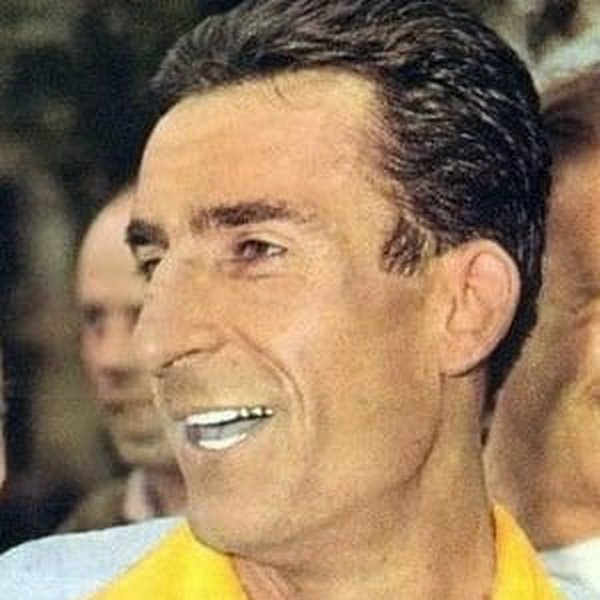- BIRTH 12/06/1925
- Country France
- MOVIE 1
Raphaël Géminiani
Raphaël Géminiani (born Clermont-Ferrand; born 12 June 1925) is a French former road bicycle racer. He had six podium finishes in the Grand Tours. He is one of four children of Italian immigrants who moved to Clermont-Ferrand fleeing from fascist violence. He worked in a cycle shop and started racing as a boy. He became a professional and then a directeur sportif, notably of Jacques Anquetil and the St-Raphaël team.
His professional career ran from 1946 to 1960. He won the mountains competition in the Tour de France in 1951. His best overall place was second in 1951 behind Hugo Koblet. He won seven stages of the Tour between 1949 and 1955 and wore the yellow jersey as leader of the general classification for four days. He won the national championship in 1953, the mountain competition of the Giro d'Italia in 1951 and third place in the Vuelta a España 1955. In 1955, Géminiani finished in the top 10 of the three big tours (Tour de France, Giro d'Italia and Vuelta a España), equalled only by Gastone Nencini in 1957. It has not been equalled since.
In 1977 he called doping checks the "cancer of cycling". He recognised that he had used drugs during his career. His strong personality earned him the nickname of Le Grand Fusil, which translates roughly as "Top Gun".
Géminiani's father, Giovanni, brought his family to France in 1920, being prosecuted in Italy by the raising fascist movement. He had run a bicycle factory in Lugo. It burned down. He established a bike shop in Clermont-Ferrand and insisted that his family speak French from then on.
The elder son, Angelo was a good amateur rider. Raphaël left school at 12 and worked in the shop, building wheels. France was still occupied by the Germans but there were still cycle races. René de Latour wrote in Sporting Cyclist that Géminiani's father said: "Look at yourself in the mirror, son, and tell me if you ever saw a coureur with legs as skinny as yours. I'm sorry, but bike racing is Angelo's business, not yours.'
At 16, in 1943, he won the first round of the Premier Pas Dunlop, which had the status of a youth championship, came third in the next heat and qualified for the final, held on 3 June 1943. It was held at Montluçon. He said: "My father knew my very marked penchant for attacking and gave me several words of advice. Among other things, to attack on a hill he had seen 15km from the finish. During the race, I followed my father's advice. When the hill came, I put in a big attack. The gap grew quickly to 20 seconds. I'd done it! The peloton didn't see me again. I crossed the line as the winner. And sign of destiny - who came sixth? A certain Louison Bobet, whose destiny was to be so closely linked to mine in the years that followed."
Géminiani started racing in mixed amateur-professional races after the war, first locally and then nationally. He received a professional contract in 1946 for the Métropole team from its manager, Romain Bellenger, and in 1947 rode his first Tour de France. ...
Source: Article "Raphaël Géminiani" from Wikipedia in English, licensed under CC-BY-SA 3.0.


